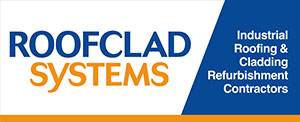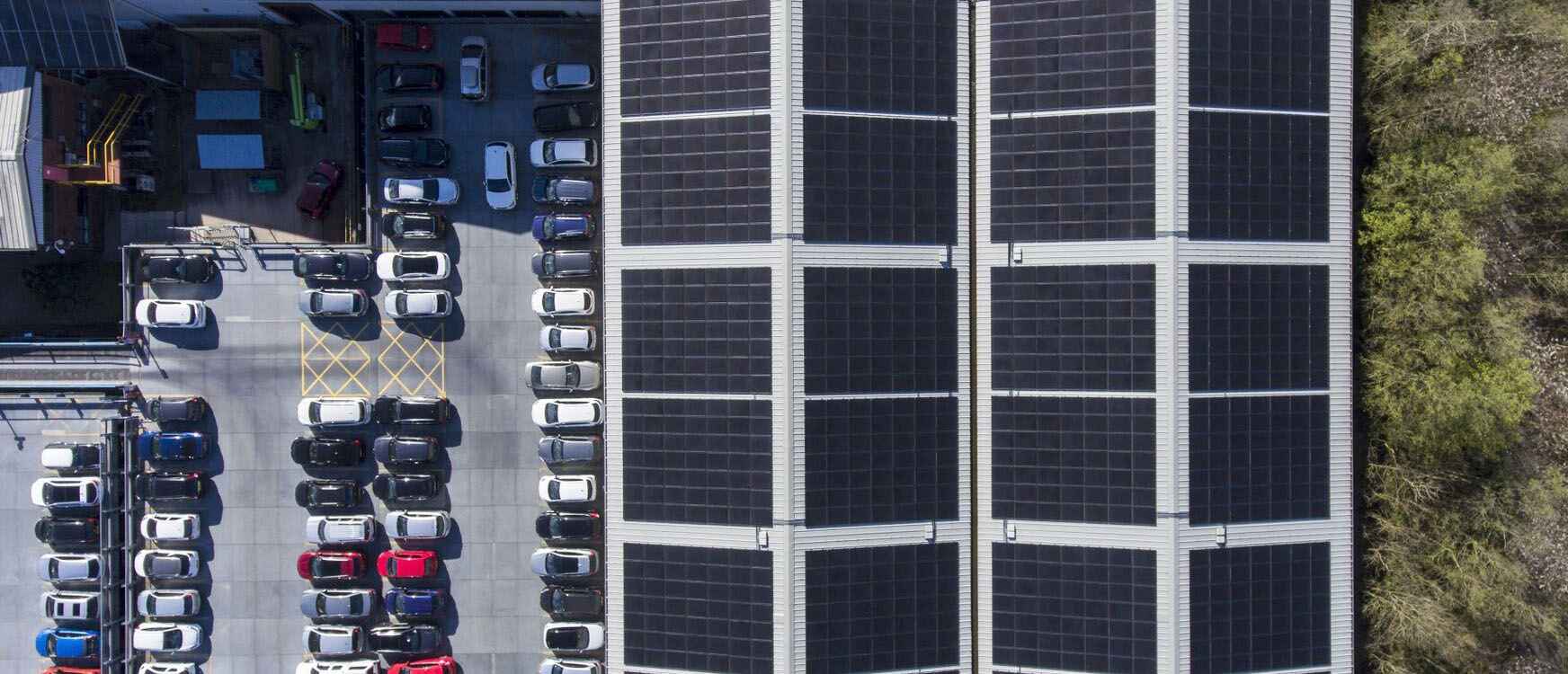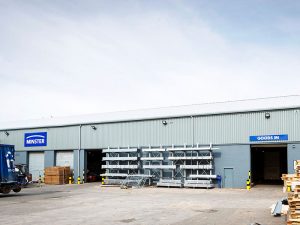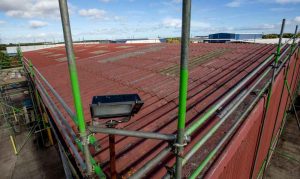
Table of contents:
- Introduction
- What is asbestos?
- Is Asbestos Harmful?
- Removal of asbestos
- What’s The Difference Between Licensed & Non Licensed Asbestos Removal?
- Non-licensed Asbestos Removal
- Examples of non-licensed asbestos removal
- Licensed Asbestos Removal
- Examples of licensed asbestos removal
- What Are The Common Types Of Asbestos?
- How Can I Tell If Asbestos Is Present?
- The Facts About Cladding Over Asbestos
- Frequently Asked Questions About Asbestos
- Case studies
- How we can help
Most older commercial and industrial properties may have been constructed using asbestos products, particularly at roof level. Asbestos is known to be hazardous to human health and can cause conditions such as asbestosis and lung cancer, so it’s important to make sure the correct health and safety procedures are followed to remove it or cladding over it. This blog post looks at what it is, how to remove it, and whether it’s appropriate to install cladding over asbestos.
What Is Asbestos?
Asbestos is the name used to refer to a group of naturally occurring fibrous minerals that have crystallised to create fibres. It became a popular building material due to its strong, incombustible, and heat-resistant properties and was used in the UK from the 1950s until its use was banned in 1999.
It was particularly popular as a fire-proofing and insulation solution. It was used to create materials in the construction industry, such as asbestos cement sheets, ceiling and roof sheets/tiles, pipe insulation, and spray coatings in many domestic and commercial buildings such as schools, hospitals, and residential homes.
Is Asbestos Harmful?
Well-maintained asbestos that isn’t disintegrating doesn’t present an immediate risk to your health. However, it becomes harmful when the fibres are disturbed and inhaled.
Research continues to show that inhaling loose asbestos fibres poses a serious risk to human health and can cause life-threatening diseases such as asbestosis and lung cancer. No amount of exposure is considered safe although asbestos-related diseases only develop after many years of exposure to it.
If an asbestos survey shows it’s present in your roof build-up, there are two options to make it safe, both of which require fully-trained experts to carry it out, the options are:
- Asbestos removal
- Cladding over asbestos
Removal of asbestos
Asbestos removal must be carried out by a fully trained workforce. Under no circumstances should you carry out the removal yourself. If you find asbestos or suspect it may be present, we recommend seeking specialist advice.
In the UK, the removal of asbestos materials is covered by legislation and codes of practice. These set out an employer’s legal duties relating to work involving asbestos including sampling and analysis.
The Control of Asbestos Regulations 2012 replaced the previous 2006 regulations and provides minimum standards for protecting employees from risks associated with asbestos exposure. The 2012 rules state that:
- Employees must be properly trained if they are likely to come into contact with asbestos
- Businesses must record and manage any suspect materials present on their premises
- Waste asbestos must be disposed of by licensed carriers
- If you’re responsible for the maintenance of non-domestic premises, you have a duty to manage the asbestos in them, to protect anyone using or working in the premises from the risks to health that exposure to asbestos causes
- In the majority of cases, work with asbestos needs to be done by a licensed contractor
- If you are carrying out non-licensed asbestos work, this still requires effective controls
Failure to comply with the regulations is a criminal offence that could ultimately result in a large fine or a prison sentence.
Non-licensed Asbestos Removal
In some circumstances where there is deemed to be a lower risk of harm from the asbestos, a license is not needed to remove it. However, training is still required so it must be carried out by specialists. The HSE may need to be given notification of the work, appropriate control measures must be taken, and the local council has to be informed.
Examples of this include:
- If the removal area is large but there are small quantities of asbestos.
- If the asbestos cement is in poor condition.
Examples of non-licensed asbestos removal
- Covering materials. Encapsulation and sealing-in work on asbestos-containing materials (ACMs) that are in good condition
- Small quantities. Cleaning up small quantities of loose/ fine debris containing ACM dust (where the work is sporadic and of low intensity, the control limit will not be exceeded and it is short-duration work)
- Drilling. The drilling of textured decorative coatings for the installation of fixtures/fittings
- Certain products. Removal of asbestos cement or vinyl floor tiles.
Licensed Asbestos Removal
The majority of higher-risk work with asbestos falls into this category which means a licensed contractor must carry it out due to the significant risk to health involved. The HSE must be notified of this type of removal project at least 14 days before it starts.
Examples of licensed asbestos removal
- Removing sprayed coatings
- Removal or other work which may disturb pipe lagging
- Any work involving loose-fill insulation
- Work on asbestos millboard
- Cleaning up significant quantities of loose/fine debris containing ACM dust (where the work is not sporadic and of low intensity, the control limit will be exceeded or it is not short-duration work)
Work on asbestos insulation boards, where the risk assessment indicates that it will not be of short duration
What Are The Common Types Of Asbestos?
There are three main types of asbestos:
- Chrysolite (white asbestos)
- Amosite (brown asbestos)
- Crocidolite (blue asbestos)
| Asbestos type | Description |
| Brown asbestos (Amosite) | This type of asbestos is considered to be one of the most dangerous. Exposure to it can significantly increase your chances of developing cancer. It is mined mostly in Africa and is commonly used in cement sheets because of its heat resistance and strength properties. |
| Chrysotile (White Asbestos) | This is the most commonly used form of asbestos. Its fibers are fine in texture and are often contaminated with trace amounts of tremolite. Found in roofs, ceilings, walls, and floors of homes and businesses as well as automobile brake linings, gaskets, and boiler seals, insulation for pipes, ducts, and appliances. |
| Blue asbestos (Crocidolite) | This type of asbestos was commonly used to insulate steam engines as well as some spray-on coatings, pipe insulation, plastics, and cement products. The fibers are incredibly fine and therefore it is one of the most harmful types of asbestos as it can easily become lodged in lungs. |
How Can I Tell If Asbestos Is Present?
Asbestos has no smell or colour and the fibres are about 10x smaller than the width of human hair so it isn’t possible to tell if your property contains it by looking at or handling the construction materials. The only way to know if asbestos is present is to have it tested by a specialist laboratory.
Properties built before its ban in 1999 are more than likely to contain asbestos products. If that’s the age of your property, you could check products to see if the manufacturer and name or date of manufacture are on any labels, and then do a quick Google search.
If the search results suggest the materials contain asbestos, you would then need to contact a specialist.
The Facts About Cladding Over Asbestos
If asbestos is disturbed, it releases harmful fibres which can cause serious illness if they are inhaled over a long period of time. Rather than removing, for example, an asbestos garage roof, in certain circumstances it is possible to leave it in place and overclad.
However, at Roofclad Systems, we would generally recommend its removal:
- Risk of disturbing the fibres. There is always a risk of disturbing the asbestos by drilling into the existing roof which can cause significant harm to everyone around.
- Additional weight. Overcladding a roof places additional weight on the structure. It would therefore be necessary to instruct an engineer to carry out calculations to ensure that the structure is capable of holding the additional weight.
- Potential planning issues. Cladding over asbestos increases the building height which may lead to the requirement to apply for planning permission from your local authority before proceeding with any work.
Frequently Asked Questions About Asbestos
Can single exposure to asbestos be harmful?
Light, short-term exposure rarely causes serious illness or disease, and one-off exposure to it is not considered to be a major risk in the way long-term exposure can be. However, no amount of asbestos exposure is considered safe and you should always seek specialist advice and take preventative measures to avoid inhaling toxic dust.
What if I have breathed in asbestos?
Asbestos-related diseases typically occur after many years of regular exposure to it. For example, a risk factor is if you worked in the construction industry throughout the 1950s to 1980s.
You should always contact your GP if you are concerned that you have been exposed to asbestos and have developed symptoms such as coughing, feeling short of breath, or experiencing chest pain.
Where is asbestos found?
- Industrial buildings: Sprayed coatings on ceilings, walls, beams and columns, cement water tanks, loose-fill insulation, roofing sheets, cement roofs, and more.
- Residential buildings: ceiling tiles, bath panels, toilet seats and cisterns, roofing felt, gutters, garages and more.
How long does asbestos stay in the air if disturbed?
Typically, particles and fibres in the air can be airborne for up to 72 hours. However, due to the small nature of asbestos fibres, the slightest of air movements may cause the fibres to be airborne for longer.
How do you test for asbestos in the air?
This needs to be done by a specialist using appropriate protective equipment. The air can be tested for asbestos by drawing a volume of air through a filter, for a measured period of time, and then examined under a microscope.
Can asbestos stick to clothes?
Asbestos fibres are incredibly small. Which means they can easily break into dust and stick to your clothes. If you think your clothes have been contaminated with asbestos, we recommend that you have them cleaned at a specialist facility or dispose of them altogether.
Case studies
Jewson Minster, Glasgow – Strip & Re-sheet Built-up System
The problem: Jewson Minster in Glasgow was experiencing a large amount of water ingress through the old profiled asbestos cement roof and Georgian-wired glass. The original roof and wall had very low thermal value in comparison with today’s standards and a large amount of heat was being lost through the pitched roof and wall cladding.
The solution: Our specialist team removed the asbestos cement-profiled roof cladding and installed a new built-up profiled metal system.
More details: Jewson Minster, Glasgow – Strip & Re-sheet Built up System
Volvo Truck & Bus Centre, Blyth – Strip & Re-sheet Roofing & Cladding Works
The problem: Similar to Jewson Minister, the Volvo Truck and Bus Centre in Blyth, was faced with an ageing profiled asbestos cement roof.
The solution: The asbestos cement profiled cladding was removed by our specialist team from the roof level. Roofclad provided a new 115 mm composite Kingspan profiled roof system, complete with new gutters, external trimline-type gutters, and rainwater pipes.
More details: Volvo Truck & Bus Centre, Blyth – Strip & Re-sheet Roofing & Cladding Works
How Can Roofclad Help?
Roofclad Systems are specialists in the removal of non-licensed asbestos roofing products with a fully trained workforce. Our expertise in working with non-licensed asbestos roofing materials means that you can be assured of a removal project’s safety, speed, and legal and regulatory compliance with minimal disruption. We can also provide a staggered programme of asbestos air testing throughout the duration of your project for additional peace of mind.
Contact us today to find out about all of our roofing services.



